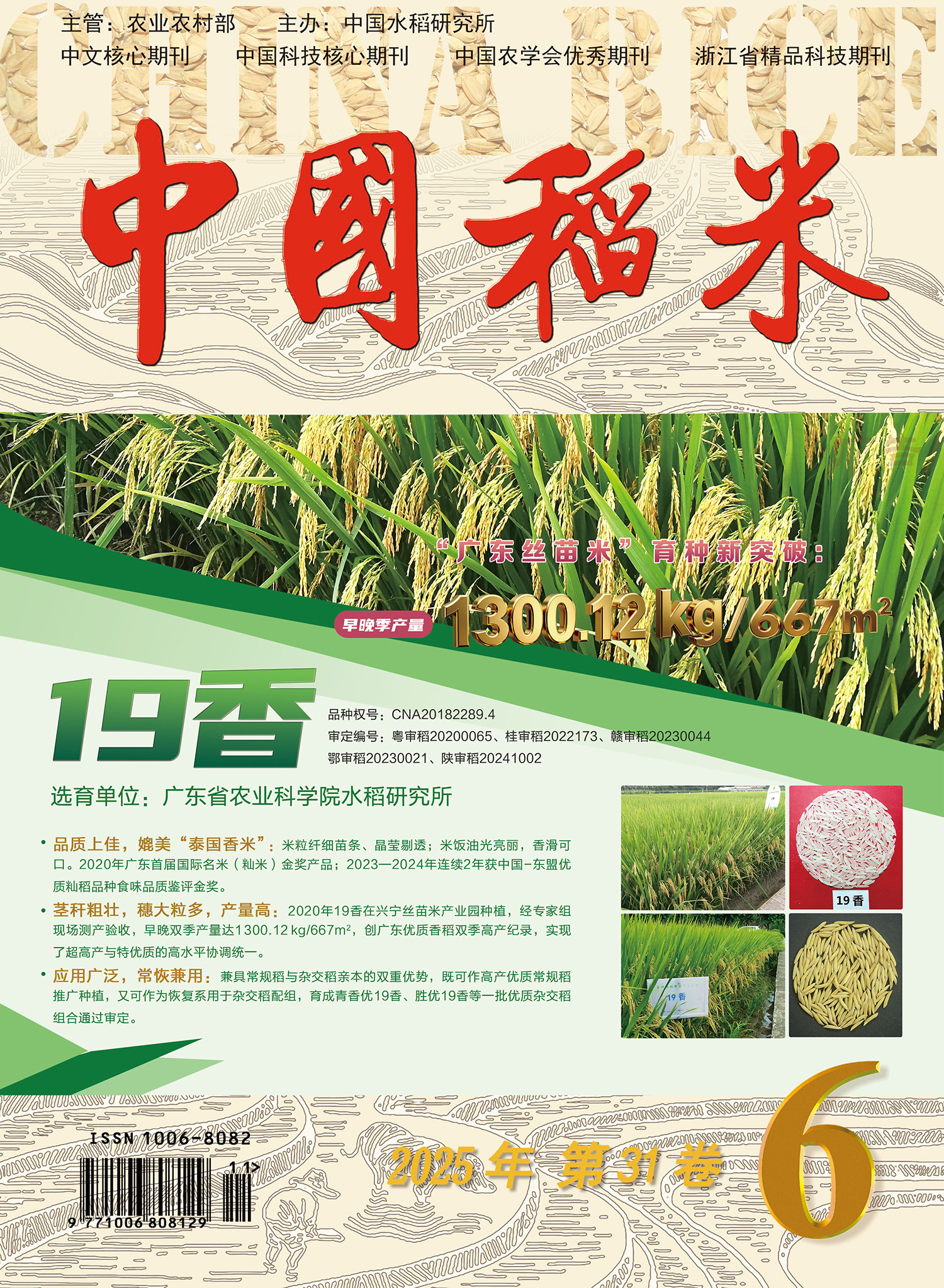Using five early-season rice varieties (Liangyou 302, Liangyou 287, Ezao 18, Ezao 17, and Liangyou 6) and five late-season rice varieties (Tyou 180, Huanghuazhan, Fengyuanyou 299, Tianyouhuazhan, and Liangyou 33) as test materials, field experiments were conducted in Zhougan Village, Dajin Town, Wuxue City, Hubei Province, in 2022. By measuring the dry matter mass and the content of nitrogen (N), phosphorus (P), and potassium (K) nutrients at key growth stages of each variety, and employing the Logistic equation y=K/(1+ae-bt) to model the dry matter accumulation process in rice, we analyzed the patterns of dry matter accumulation and N, P, and K nutrient uptake in early-and late-season rice varieties, aiming to provide a theoretical basis for scientific and rational fertilization of double-cropping rice in Hubei Province. The results revealed that, in terms of dry matter accumulation, both early-and late-season rice exhibited a “slow-fast-slow” growth trend in total dry matter accumulation, with the rapid accumulation phases occurring from 59 to 95 days (lasting 36 days) and from 28 to 73 days (lasting 45 days) after transplanting, respectively. The dry matter accumulation in stems and leaves initially increased and then decreased, while that in panicles showed a continuous upward trend. Regarding nutrient uptake, the total N accumulation in both early- and late-season rice showed a continuous increase; during the rapid accumulation phase, early-season rice accumulated 52.7% of its maximum N accumulation, compared to 76.9% for late-season rice. The total accumulation of P and K initially increased and then decreased. At harvest, the N and P content in the panicles of early-season rice accounted for 63.8% and 73.9% of the total, respectively, while K content in the stems accounted for 72.8% of the total. For late-season rice, the N and P content in the panicles accounted for 69.7% and 76.2% of the total, respectively, and K content in the stems accounted for 68.6% of the total. The yield measurement results showed that the average yield of late-season rice was 7,924.6 kg/hm2, representing a 24.2% increase compared to early-season rice (6,381.5 kg/hm2). To produce 100 kg of rice grain, early-season rice required the uptake of 1.9-2.0 kg of N, 0.9-1.2 kg of P2O5, and 2.5-2.9 kg of K2O, while late-season rice required 1.5-1.8 kg of N, 0.7-1.0 kg of P2O5, and 1.6-2.1 kg of K2O. In conclusion, there are significant differences in dry matter accumulation and N, P, and K nutrient requirements between early- and late-season rice at different growth stages. In practical fertilization, the ratios of N, P, and K in fertilizers for early- and late-season rice should be adjusted to formulate targeted fertilization strategies, improve fertilizer utilization efficiency, and maximize the yield and economic benefits of double-cropping rice.

